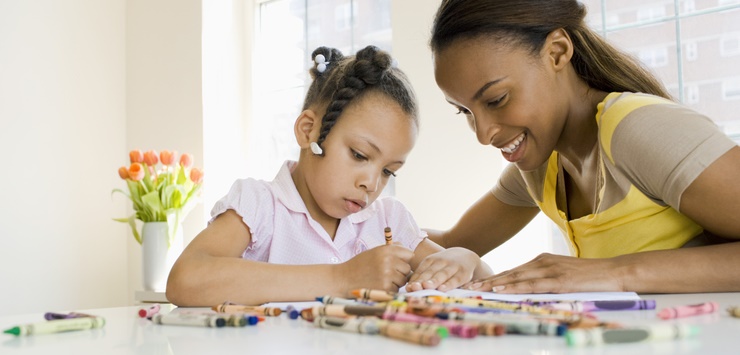Does your child have amblyopia? This is how you can help.

If your child has amblyopia, sometimes called “lazy eye,” they might need extra encouragement as they navigate their diagnosis.
Amblyopia is a problem that starts between birth and about age 7 and happens when one eye is weaker than the other. The brain chooses to take in images from the stronger eye while ignoring images from the weaker eye.
That’s why early treatment is important as it can usually reverse amblyopia.
"Your pediatrician will screen your child for any indication of vision problems and refer them to an ophthalmologist or optometrist when necessary," said Dr. Amanda Marzolf, a pediatric ophthalmologist at UK Advanced Eye Care. "It is easier to treat amblyopia the earlier you catch it. It's also important to treat any underlying conditions that are contributing to amblyopia, such as a need for glasses, an eye turn, a droopy eyelid or a cataract. UK HealthCare has a wonderful pediatric eye care team with the expertise to take care of all of your child’s eye care needs, including amblyopia."
Here’s what you should know about the condition and how you can help your kid conquer it.
How is amblyopia treated?
For amblyopia to be treated, your child must use the weak eye. This will force the eye to get stronger and correct the vision in the weak eye.
Your doctor may suggest:
- Blocking the strong eye with an eye patch.
- Blurring the strong eye with eye drops or glasses.
Treatment may last for a few weeks or months.
After treatment ends, be sure to set up follow-up eye exams for your child. Amblyopia can return even after successful treatment.
Preparing your child for eye patch treatment
Help your child understand why the patch is needed. This will help your kid comply with the patching treatment so that they can develop the best vision possible. Here are some things you can do:
- Talk to your child before treatment begins. Explain that the patch is needed to help make vision in the affected eye stronger.
- Explain to family and friends as well as caregivers and teachers why your child is wearing the patch. Let them know how important it is that the patch stays on and ask them to be supportive. Teachers are also often glad to explain to your child's peers and classmates why your kid is wearing the patch. This can help your child feel more comfortable about wearing the patch at day care or in school.
Making eye patch treatment more fun
Wearing an eye patch is often not enjoyable, but there are some things you can do to make the times your child is wearing the patch more fun and to help make the treatment more effective.
- Help your child adjust to wearing the patch. Spend time with your child just after the patch is put on. It takes a short time – about 10 or 15 minutes – for the brain to adjust to having the dominant eye covered. Doing something fun during this time can make the transition easier.
- Find activities to make the affected eye work harder. Give your child as much one-on-one attention as possible while they are wearing the patch. Your child will enjoy the time you spend together, and this will help take their mind off the patch. Try to find games and activities that capture your child's attention and make the affected eye work harder.
- Give your child some control in a fun way. If your kid is wearing adhesive-type patches, let them decorate them. Check with your doctor to see if crayons, markers, stickers or other kinds of decorations are acceptable and how to apply them. Decorating a patch can make your child feel better about wearing it.
Copyrighted material adapted with permission from Healthwise, Incorporated. This information does not replace the advice of a doctor.





